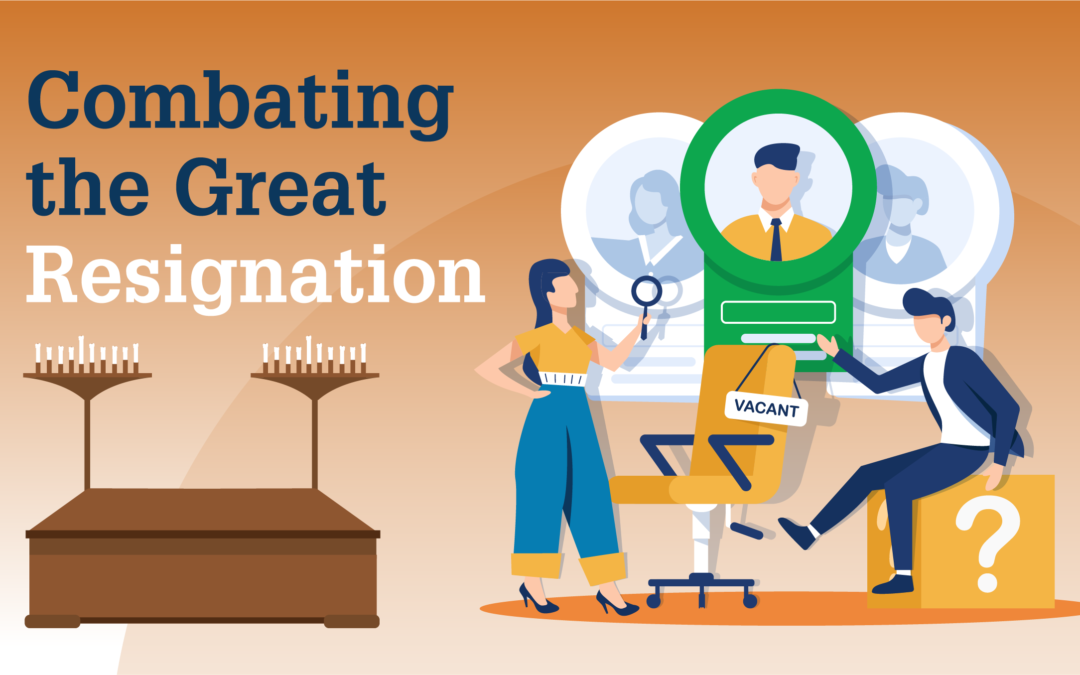In the wake of COVID-19, millions of Americans quit their jobs in what’s known as the Great Resignation. During this time, many older employees sought early retirements, while younger workers––bolstered by government stimulus dollars––became more selective about where they worked, how they worked, and who they worked for.
Funeral homes face a particular set of challenges with regard to retaining workers. The in-person nature of funeral services led many to fear exposure to COVID-19, and many part-time employees sought work elsewhere. All of these factors come in tandem with a profession that is rapidly changing.
To survive the Great Resignation, funeral homes need to address both the needs of their employees and the shifting trends in death care practices.
Shifting Death Care Trends
Funeral homes across the nation are experiencing increased volumes of work; however, the availability of personnel with proper licensing isn’t keeping up. On top of this, the death care profession is experiencing unprecedented shifts in family preferences that were further exacerbated by the pandemic.
Most significantly is the growing popularity of cremations. In 2000, American cremation rates were about 26%. By 2021, this number more than doubled. Since cremations cost significantly less than funerals with burials, it’s become essential for funeral homes to figure out not only how to incorporate cremations into their service offerings but also how to pair cremations with additional services.
Beyond cremations, the death care profession is also seeing growth in a variety of other services. Alternative arrangements such as green burials, virtual services, and celebrations of life are increasing in popularity. And while these growing sectors present new opportunities for funeral homes, they also require the proper talent and training.
Engage Your Employees
To adapt to the changing death care landscape, you’ll need to develop a business strategy that both attracts and retains new talent. This all starts with proper onboarding. Beyond conducting the proper training and introduction to your workplace, your onboarding should also introduce team members to your workplace culture.
Collecting employee feedback is a great way to learn how to best engage your employees. By actively soliciting feedback, you’ll generate valuable insights into your employees’ experiences and what you can do to create a more positive workplace.
One benefit that’s particularly important to younger generations is providing opportunities for growth. That’s why you should consider having regular meetings with each of your team members to help them plan a career path within your business. Over time, each of your employees will acquire new skills on the job, take on additional responsibilities, and contribute more to your funeral home. If employees can see a future at your funeral home, then they’re more likely to stick around.
Conduct a Workflow Analysis
To figure out how your funeral home can best engage your employees, you might consider conducting a workflow analysis, that is, a review of all processes related to each of your operations. This could include sales, clerical work, training, and recruitment, among others.
The goal of such an analysis is to closely examine how all of your processes get done, eliminate efficiencies, and, if possible, automate certain tasks.
For example, a workflow analysis of a funeral home would likely take a look at its preneed sales funnel. Assuming the program is currently working well, a workflow analysis might help you determine how to make the process even more efficient, like adding a marketing strategy.
Alternatively, a workflow analysis may take a closer look at employee onboarding and retention. Through extensive observation, the analysis may find that higher turnover rates are the result of subpar benefits and employees feeling overstretched in their responsibilities. From these findings, your leadership can begin to implement changes.
Doing It Right
With the profession rapidly changing, today’s funeral home’s face a litany of barriers to success. Finding employees with the proper certification, training people in new death care techniques, and adapting to the shifting preferences of families––all while continuing to oversee the day-to-day processes of their funeral homes. When properly conducted, a workflow analysis can take months–not including the time it takes to develop and implement changes. This is where it can be helpful to rely on the expertise of consultants.
At Johnson Consulting Group, our team of death care consultants has worked in the business for decades. Within our team, you’ll find experienced professionals who have owned, operated, and managed funeral homes of all sizes throughout the country, giving them the industry expertise required to help your business adapt to evolving trends.
To weather the Great Resignation, you’ll need to focus on your people, both members of your current team and those who you hope to bring onboard. It can be difficult to take an objective look at your funeral, but with the help of a JCG consultant they can provide you with the clarity needed to engage your teams and pave the way for success.
WEATHER THE STORM